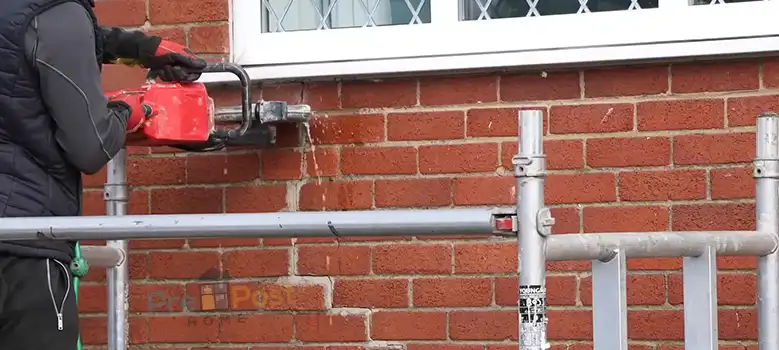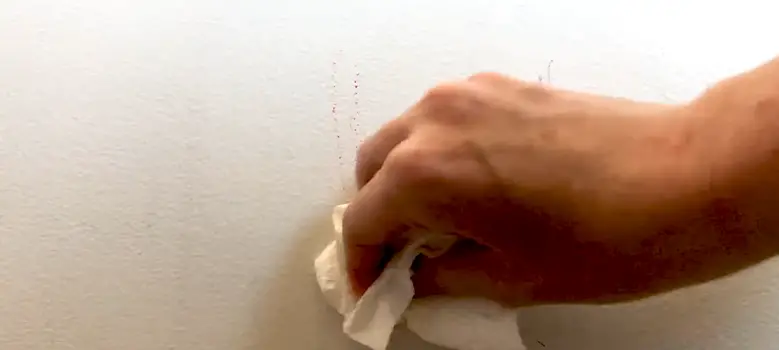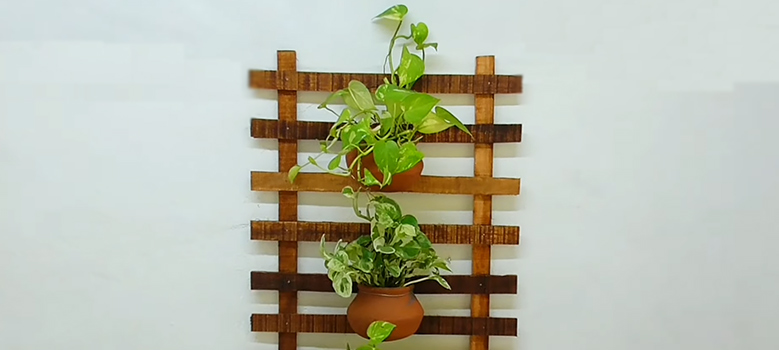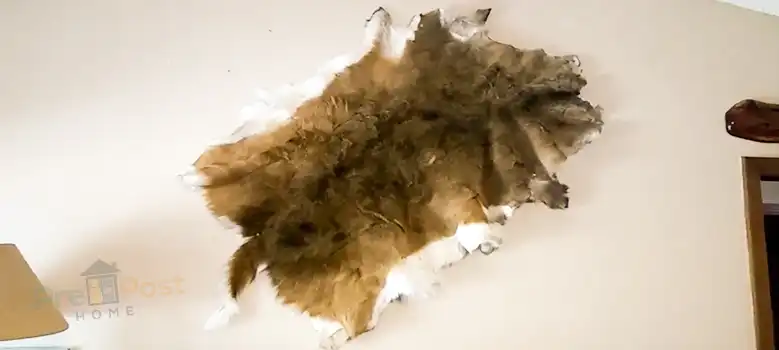As a homeowner, a leaning exterior wall can be concerning. Not only is it an eyesore, but it can also indicate structural issues that need to be addressed. The good news is that with the right approach, many leaning walls can be straightened and reinforced. In this article, I’ll walk you through the steps to identify, diagnose, and repair a leaning exterior wall.
How to Identify a Leaning Wall?
The first step is to confirm that you actually have a leaning wall. Here are some telltale signs:
Visible leaning or bulging – View the wall from different angles to check for obvious leaning. Use a level to verify.
Cracks – Look for vertical cracks running up the wall. As the wall leans, it can crack under the strain.
Separations – Check places where the wall meets other structures like a porch or the foundation. Separations can indicate shifting.
Door and window issues – Doors and windows sticking or not closing properly can signal a leaning wall.
If you spot any of these signs, you likely have a leaning wall that needs further evaluation.
How to Identify the Cause of a Leaning Wall
Once you have identified that your exterior wall is leaning, the next step is to determine the cause. The most common causes of leaning exterior walls are:
Foundation problems: This is the most serious cause, as it can indicate that the foundation of your home is not stable. Foundation problems can be caused by poor soil conditions, water damage, or age.
Soil erosion: If the soil around the foundation erodes, it can cause the foundation to settle and the wall to lean.
Tree roots: Tree roots can grow under the foundation and cause it to heave, which can lead to leaning walls.
Improper construction: If the exterior wall is not built correctly, it may be more likely to lean over time.
Step-By-Step Guide to Fix a Leaning Wall
Here’s a step-by-step guide that should suffice to fix the most sever of the leaning wall situations. Beware though, depending on the type and status of your leaning wall, you may not need to follow all of them.
Step 1: Adjust the Footing – Find Balance:
If your brick wall leans because of poor drainage or settling, adjust the footing. Raise the base, add shims, and level the foundation. This prevents future settling.
Step 2: Foundation Support – Strong Backup:
For foundation problems causing the lean, use helical piers or steel I-beams for extra support. Helical piers go under the foundation or around the house perimeter, while steel I-beams attach to the foundation underneath.
Step 3: Wall Anchors – Hold It Together:
If poor drainage or settling is the issue, use wall anchors. Drive them into the ground along the house’s perimeter and tighten them to prevent leaning and support the foundation.
Step 4: Helical Piers – Ground Support:
For foundation troubles, install helical piers. Drive them into the ground, connect brackets to the wall, and tighten for stability.
Step 5: Foundation Plate – Ground Guardian:
Fix a leaning brick wall from poor drainage or settling with a foundation plate. Place it under the footing, attach it to the wall with brackets, and tighten it to prevent leaning.
Step 6: Soil Nails – Earth Allies:
Combat a leaning brick wall with soil nails. Drive them into the ground, attach them to the foundation, and backfill the excavation.
Step 7: Shotcrete Fix – Concrete Solution:
For poor drainage or settling, use Shotcrete. Wet the ground, apply the Shotcrete, and let it harden to support the wall.
Step 8: Cables or Struts – Foundation Support Act:
Install cables or struts for foundation problems. Dig a trench, place wires along the track, and attach them to the foundation for extra support.
Step 9: Replace Damaged Bricks – Swap and Secure:
Remove damaged bricks with a chisel and hammer, clean mortar joints, and install new bricks.
Step 10: Masonry Addition – Extra Support:
If poor drainage or settling is the cause, add a layer of masonry. Wet the wall, spread masonry with a trowel, and let it dry for added stability.
Pro Tips for Preventing Future Leaning Walls
Here are some tips to help prevent your exterior walls from leaning in the future:
- Keep the soil around your foundation well-drained. This will help to prevent the soil from eroding and causing the foundation to settle.
- Make sure that your gutters and downspouts are properly maintained. This will help to direct water away from your foundation.
- Plant trees and shrubs away from your foundation. The roots of trees and shrubs can damage your foundation and cause it to shift.
- Regularly inspect your foundation and walls for signs of damage. If you notice any cracks or other problems, have them repaired immediately.
How much does it cost to fix a leaning exterior wall?
The cost to fix a leaning exterior wall will vary depending on the cause and severity of the lean, as well as the repair method used. If you are hiring a professional contractor, you can expect to pay between $1,000 and $5,000 for the repair.
How long does it take to fix a leaning exterior wall?
The amount of time it takes to fix a leaning exterior wall will also vary depending on the cause and severity of the lean, as well as the repair method used. However, most repairs can be completed within a few days.
Wrap Up
A leaning exterior brick wall can be an alarming sight for any homeowner. Left unaddressed, the problem is likely to worsen over time, leading to potential damage and costly repairs down the road. Thankfully, with a diligent approach and the repairs outlined above, your brick wall can often be straightened and reinforced successfully. The key is to properly diagnose the cause, consult qualified experts as needed, and utilize proven methods to level and stabilize the wall. With patience and care, you can restore your brick wall to its original solid, vertical form.






